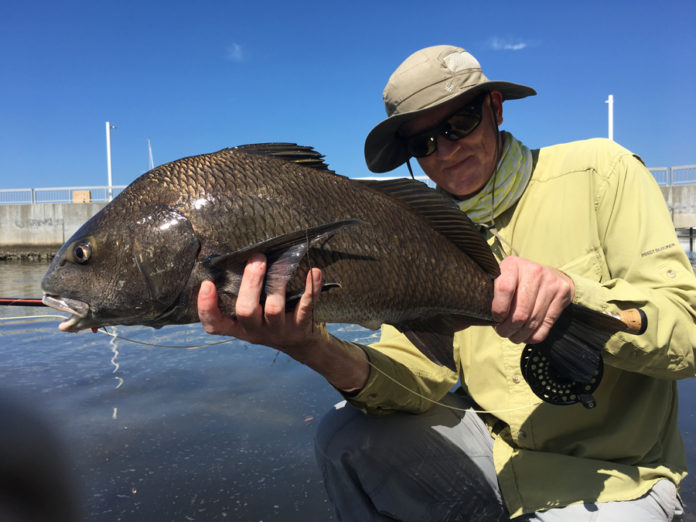Written by: Evan Jones
All photos by Evan Jones
Regardless of your target species, water temperature is one of the most important factors in determining fish location and behavior. A small change in either direction can have a major impact. As winter weather settles in around the country, fish will begin seeking out warmer water, even if the difference is only a few degrees. Not only does the warmth help boost their metabolism, allowing them to chase down and eat larger prey, but warmer water also benefits the prey animals, resulting in a greater abundance of local fish food. It should come as no surprise, then, that anglers who are better able to identify and seek out sources of warm-water influx will be more likely to find actively-feeding fish during cold snaps. Both tailwaters and spring creeks are well known for their stable temperatures, but there are some lesser-trafficked options that are also worth a look when it gets cold. Granted, they aren’t usually the most scenic spots, but they’re great alternatives for anglers who don’t mind sacrificing a bit of scenery in order to gain a bit of breathing room.
1. Wastewater Treatment Plants

These facilities are usually located near streams or rivers, so that their treated outflows can be released directly back into the local watershed. While a “poop pipe” (as it’s known on one Vermont river) may not make the most appealing backdrop for a day of fishing, the treatment process results in water discharges that maintain a fairly consistent temperature all year long, both warming the water during winter and cooling it during summer. The discharged water will also have higher nutrient content than the water upstream. (Probably best not to think too hard about this one). You’ll notice some of the differences when wading: the riverbed is usually slicker, since the algae growing season is longer, and you’ll see more prolific aquatic life of all sorts, as well. Even rivers that aren’t typically regarded as good fisheries can spring to life for a few miles downstream of a well-placed water treatment plant. The best part is that, unlike most other prime fishing spots, finding these places is as easy as a quick Google search. Just make sure the surrounding land is public before you plan a trip.
2. Thermal Power Plants

Power plants that generate electricity using fossil fuels or nuclear sources also tend to produce a great deal of heat. Many of them cool equipment using recirculating water that is eventually released back into the surrounding environment at a higher-than-ambient temperature. Animals of all types are drawn to these warm water discharges during winter months, but especially around coastal power plants located in southern states. Fish species that are particularly sensitive to cold such as tarpon, snook, crevalle jacks, and cobia will stack up in surprising numbers near power plant discharges at certain times, often producing some of the best opportunities of the whole year to catch one on a fly. Again, these facilities are conspicuous and easy to find with a quick Internet search, but be aware that public access for both boaters and waders will be tightly controlled.
3. Mud Flats

If you just can’t bring yourself to rely on man-made sources of warmth when fishing, there’s always good, old-fashioned sunshine. It won’t do much to heat moving water, but sunshine can have a powerful effect on saltwater bays or freshwater lakes, especially in shallow, muddy, south-facing areas that are sheltered from the wind and current. Fish of all types will periodically visit mud flats to warm up during nice, sunny winter days. When scouting for these areas, it’s important to keep in mind that they may not be places you typically associate with good fishing, as there may not be any reason for fish to visit them at other times during the year. So check the widest area possible, and try not to write off a particular spot just because you haven’t seen fish there before, each day can be different.
Evan Jones is the assistant editor of the Orvis Fly Fishing blog. He lives in Colorado.
Credit: Source link






























